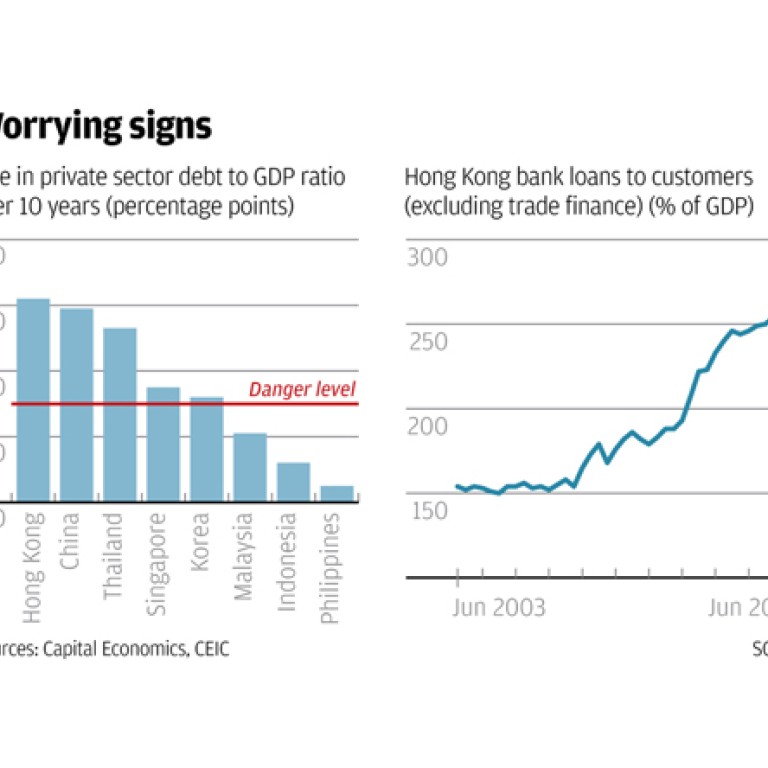
Asia is steaming towards a debt crisis all of its own
With the level of private sector debt hitting new highs in China, South Korea and Thailand, there is no room for complacency
For the past five years Asia's leaders have congratulated themselves on their prudence and good judgment in avoiding the credit crisis which struck much of the developed world in 2008.
But while they have been busy patting themselves on the back, worrying signs have emerged that several of the region's main economies - together with a handful of major emerging markets elsewhere - are heading towards a nasty debt crisis all of their own.
In recent years the level of private sector debt has hit new highs in several East Asian countries. In China, South Korea and Thailand, for example, outstanding private sector debt came within a whisker of 150 per cent of gross domestic product last year. The average ratio for emerging markets was just 55 per cent.
But as Neil Shearing at Capital Economics points out in a research paper published this week, it is not the level of debt that should set alarm bells ringing, so much as the pace at which indebtedness is rising.
Default rates will begin to rise as loans made at the height of the lending booms begin to turn bad
Shearing examined 32 emerging market banking crises dating back to 1990. Of those, ten were caused by excessive public sector borrowing, and the remaining 22 by a rapid build-up of private sector debt.
"Since 1990 no emerging market that has seen its private sector debt ratio increase by more than 30 percentage points in the space of a decade has subsequently avoided a banking crisis," he warns.
That's an ominous pattern. According to Shearing's analysis, over the past 10 years debt growth has passed the hazard threshold in four East Asian markets - Hong Kong, mainland China, Thailand and Singapore - with Korea on the cusp of the danger zone (see the first chart below).
By his measure Brazil and Turkey are also heading for trouble. The most exposed market, however, is Hong Kong, where Shearing reckons the private sector debt to GDP ratio has soared by 62 percentage points to 200 per cent of GDP.
If anything, that is likely to be an underestimate.
As the second chart shows, over the past 10 years the value of Hong Kong banks' loans to their customers (excluding trade finance) has soared from 154 per cent of the city's GDP to 266 per cent, a rise of 112 percentage points.
In Hong Kong, as in the other danger zone economies, much of the recent rise in private debt has been associated with rapidly rising local property prices.
But as Shearing notes, in several of these markets the run-up in property prices looks hard to justify. Home prices in Brazil's commercial capital Sao Paulo have climbed more than 170 per cent since the beginning of 2008, eclipsing the near-doubling of Hong Kong's residential prices over the same period.
After such rapid debt increases, history teaches that sooner or later default rates will begin to rise as loans made at the height of the lending booms begin to turn bad.
As banks' assets sour, they tighten their lending standards, and both households and businesses find it harder to get credit. That slows economic activity, which triggers even more defaults in a worsening feedback spiral.
In past crises, Shearing notes that non-performing loan ratios have typically climbed to 18 per cent; a level he warns would be high enough to wipe out bank capital cushions even in well capitalised markets like Hong Kong and Singapore. At the same time, GDP has typically contracted by 8 per cent.
Things are highly unlikely to get that bad, at least in Hong Kong. Even at the worst of the Asian crisis overdue and rescheduled loans never exceeded 9 per cent of the total, a level which if it recurred would still leave local banks with adequate capital.
Meanwhile, the government has more than enough fiscal firepower to defend economic activity through any downturn.
Even so, the risks for the region are substantial. Any complacency would be badly misplaced.

